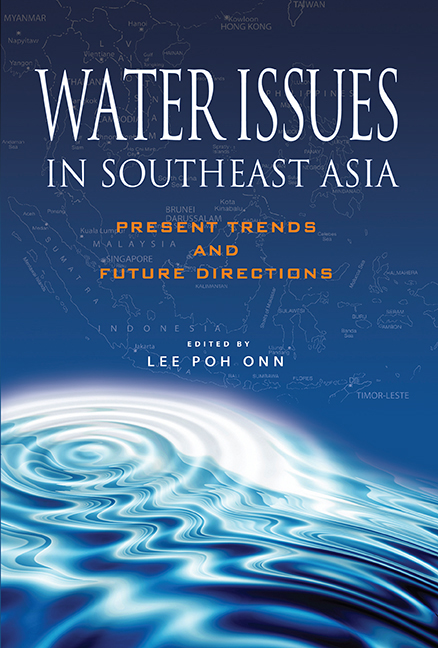Book contents
- Frontmatter
- Contents
- List of Tables, Figures, Boxes and Photos
- Acknowledgements
- About the Contributors
- CHAPTER 1 Introduction
- CHAPTER 2 China and the Potential for Conflict over Water among Eurasian States
- CHAPTER 3 River Basin Agreements as Facilitators of Development
- CHAPTER 4 Privatization of Water Services via Public-Private Partnership and Implications for Southeast Asia
- CHAPTER 5 Indonesia's Water Management Reform
- CHAPTER 6 Water Resource Management Issues in Malaysia
- CHAPTER 7 Privatization Issues in Water Supply in Malaysia
- CHAPTER 8 Troubled Waters: Rehabilitating the Pasig River, the Philippines
- CHAPTER 9 The Privatization of Water Services in Metro Manila: Lessons from a Mixed Outcome
- CHAPTER 10 Singapore's Experience in Water Resource Management
- CHAPTER 11 Thailand's Water Sector: Overview and Implications
- CHAPTER 12 Water Resources and Issues Concerning Sustainable Watershed Management Practices in Vietnam
- Index
CHAPTER 11 - Thailand's Water Sector: Overview and Implications
Published online by Cambridge University Press: 21 October 2015
- Frontmatter
- Contents
- List of Tables, Figures, Boxes and Photos
- Acknowledgements
- About the Contributors
- CHAPTER 1 Introduction
- CHAPTER 2 China and the Potential for Conflict over Water among Eurasian States
- CHAPTER 3 River Basin Agreements as Facilitators of Development
- CHAPTER 4 Privatization of Water Services via Public-Private Partnership and Implications for Southeast Asia
- CHAPTER 5 Indonesia's Water Management Reform
- CHAPTER 6 Water Resource Management Issues in Malaysia
- CHAPTER 7 Privatization Issues in Water Supply in Malaysia
- CHAPTER 8 Troubled Waters: Rehabilitating the Pasig River, the Philippines
- CHAPTER 9 The Privatization of Water Services in Metro Manila: Lessons from a Mixed Outcome
- CHAPTER 10 Singapore's Experience in Water Resource Management
- CHAPTER 11 Thailand's Water Sector: Overview and Implications
- CHAPTER 12 Water Resources and Issues Concerning Sustainable Watershed Management Practices in Vietnam
- Index
Summary
INTRODUCTION
Both the availability and use of water are changing. Water availability can be understood within the context of the dynamics of the water cycle. These resources are renewable (except for some groundwater), but only within clear limits, as in most cases water flows through catchments or river basin that are more or less selfcontained. Water resources are also variable, over both space and time, with huge differences in availability in different parts of the world and wide variations in seasonal and precipitation in many places. This variability of water availability is one of the most essential characteristics of water resource management.
The precipitation that falls on land surface is the predominant source of water required for human consumption, agriculture and food production, industrial waste disposal processes and for support of natural and semi-natural ecosystems. Thailand's primary source of water is run-off diverted by humans for use in irrigated agriculture, in industry and in homes (rural and urban); for consumption of various kinds; and for waste disposal. It is the water of evapo-transpiration that mainly supports forests, rain-fed cultivated and grazing land, and a variety of ecosystems.
It has been estimated that more than 2 billion people are affected by water shortages in over forty countries: 1.1 billion do not have sufficient drinking water and 2.4 billion have no provision for sanitation. At present many developing countries have difficulty in supplying the minimum annual per capita water requirement of 1,700 cubic metres of drinking water necessary for active and healthy life for their people.
Because of population growth, the average annual per capita availability of renewable water resources is projected to fall from 6,600 cubic metres to 4,800 cubic metres (m3) in 2025. Given the uneven distribution of these resources, some 3 billion women and men will live in countries — wholly or partly arid or semi-arid — that have less than 1,700 cubic metres per capita, the quantity below which people start to suffer from water stress.
- Type
- Chapter
- Information
- Water Issues in Southeast AsiaPresent Trends and Future Direction, pp. 255 - 285Publisher: ISEAS–Yusof Ishak InstitutePrint publication year: 2012



